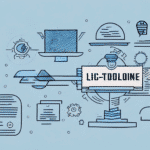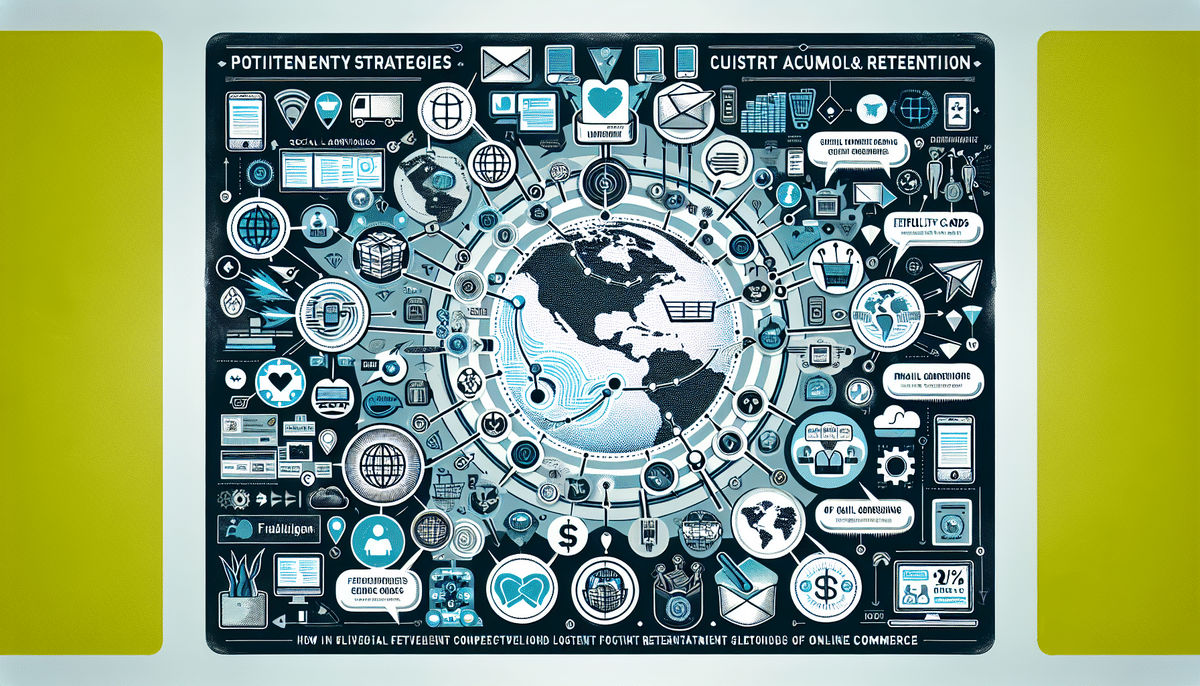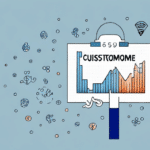Overcoming E-commerce Challenges: Strategies for Email Marketing and Automation
Running an e-commerce business presents a multitude of challenges, from intense competition and customer acquisition to retention and cybersecurity. To thrive in this dynamic landscape, harnessing the power of email marketing and automation can provide significant advantages. In this comprehensive guide, we delve into effective strategies that can help you navigate and overcome common e-commerce hurdles, ultimately building a successful online retail business.
Understanding E-commerce Challenges
E-commerce retailers face several obstacles that can impede growth and profitability. Some of the most prominent challenges include:
- Intense Competition: With millions of online stores, standing out is a constant struggle.
- Customer Acquisition and Retention: Attracting new customers and keeping existing ones loyal is crucial.
- Cart Abandonment: High rates of abandoned shopping carts can significantly impact sales.
- Cybersecurity: Protecting customer data is paramount to maintaining trust.
- Changing Consumer Behaviors: Adapting to evolving customer preferences and trends is essential.
The Critical Role of Email Marketing in E-commerce
Email marketing is a vital tool for e-commerce businesses, offering a direct line of communication to both potential and existing customers. According to a 2023 report by Data Studio, email marketing boasts an impressive ROI of 4300%, making it one of the most cost-effective marketing strategies available.
By leveraging email campaigns, you can deliver personalized and targeted messages that resonate with your audience, leading to increased engagement, higher conversion rates, and improved customer loyalty.
Building Trust Through Email Marketing
In the digital marketplace, building trust is essential. With the prevalence of online scams and data breaches, customers are cautious about where they shop. Email marketing helps establish credibility by consistently providing valuable content, such as product updates, educational resources, and exclusive offers. Regular communication reassures customers of your reliability and commitment to quality.
Gathering Customer Insights
Email campaigns can also serve as a valuable tool for gathering customer feedback. Incorporating surveys and feedback forms within your emails allows you to understand customer preferences, identify areas for improvement, and tailor your offerings to better meet their needs. According to SurveyMonkey, businesses that actively seek and implement customer feedback see a 10-15% increase in customer satisfaction and retention.
Addressing Top E-commerce Challenges with Email Marketing
Reducing Cart Abandonment
Cart abandonment is a significant issue for online retailers, with global abandonment rates exceeding 70% [Baymard Institute]. Implementing targeted email campaigns can help recover potentially lost sales. Strategies include sending reminder emails, offering limited-time discounts, and providing assistance with the checkout process.
Enhancing Customer Retention
Acquiring new customers is more expensive than retaining existing ones. Email marketing enables you to maintain ongoing relationships with your customers through personalized content, loyalty programs, and exclusive offers, fostering long-term loyalty and repeat business.
The Power of Automation in E-commerce
Automation streamlines various aspects of your e-commerce operations, allowing you to focus on strategic growth initiatives. By automating tasks such as email segmentation, campaign scheduling, and customer service inquiries, you can enhance efficiency and deliver a seamless customer experience.
Streamlining Inventory Management
Automated inventory management systems keep track of stock levels in real-time, automatically reorder products when supplies run low, and prevent stockouts. This ensures consistent product availability, reducing the risk of lost sales and enhancing customer satisfaction.
Optimizing Marketing Campaigns
Automation tools can analyze customer behavior and campaign performance, providing actionable insights to optimize your marketing efforts. By leveraging data-driven strategies, you can refine your campaigns to achieve higher engagement and conversion rates.
Developing an Effective Email Marketing Strategy
An effective email marketing strategy is foundational to e-commerce success. To create a robust strategy, consider the following steps:
- Identify Your Target Audience: Understand who your customers are, their preferences, and behaviors.
- Set Clear Objectives: Define what you aim to achieve, whether it's increasing sales, enhancing engagement, or boosting brand awareness.
- Select the Right Email Marketing Platform: Choose a platform that offers the features and scalability your business requires.
- Develop a Content Calendar: Plan your email campaigns in advance to ensure consistent and timely communication.
Creating Engaging Content
Your email content should captivate your audience and encourage action. Focus on:
- Compelling Subject Lines: Craft subject lines that grab attention and entice recipients to open the email.
- Personalization: Use customer data to tailor messages, making them more relevant and engaging.
- Segmented Email Lists: Divide your email list into segments based on demographics, purchasing behavior, or engagement levels to deliver more targeted content.
- Testing and Optimization: Conduct A/B testing on various elements of your emails to identify what resonates best with your audience and optimize accordingly.
Personalizing and Optimizing Email Campaigns
Personalization Techniques
Personalization goes beyond addressing customers by their names. Utilize data-driven strategies to create highly personalized experiences:
- Behavioral Triggers: Send emails based on customer actions, such as browsing history or past purchases.
- Dynamic Content: Tailor the content of your emails to match individual customer preferences and interests.
- Personalized Recommendations: Use algorithms to suggest products that align with each customer's unique tastes.
Ensuring Mobile-Friendliness
With over 50% of emails being opened on mobile devices [Litmus], it's crucial that your emails are optimized for mobile viewing. Implement responsive designs, concise content, and easily clickable buttons to enhance the mobile user experience.
Measuring Success and Optimizing Your Strategy
Tracking the right metrics is essential to assess the effectiveness of your email marketing campaigns and make data-driven decisions for continuous improvement.
Key Metrics to Monitor
- Open Rates: Measure the percentage of recipients who open your emails.
- Click-Through Rates (CTR): Gauge how many recipients click on links within your emails.
- Conversion Rates: Track the percentage of recipients who complete a desired action, such as making a purchase.
- Revenue Generated: Assess the total revenue attributed to your email campaigns.
Continuous Optimization
Use the insights gained from metrics to refine your strategies. Experiment with different subject lines, content formats, and sending times to identify what drives the best performance. Additionally, leverage email segmentation to deliver more targeted and relevant content to your audience.
Common Mistakes to Avoid in Email Marketing
Even with a well-crafted strategy, certain pitfalls can undermine your email marketing efforts:
- Neglecting Segmentation: Sending generic emails to your entire list can reduce engagement.
- Overwhelming Frequency: Bombarding subscribers with too many emails can lead to unsubscribes.
- Lack of Personalization: Generic content fails to resonate with individual recipients.
- Poor Subject Lines: Uninspiring subject lines can result in low open rates.
- Ignoring Mobile Optimization: Non-responsive emails can frustrate mobile users and decrease engagement.
By avoiding these common mistakes, you can enhance the effectiveness of your email marketing campaigns and foster stronger relationships with your customers.
Implementing Automation in Your Email Marketing Strategy
Integrating automation into your email marketing strategy can significantly enhance efficiency and effectiveness. Follow these steps to implement automation:
- Identify Repetitive Tasks: Determine which tasks, such as email scheduling and follow-ups, can be automated.
- Choose the Right Automation Tools: Select an email marketing platform that offers robust automation features tailored to your business needs.
- Create Automated Workflows: Design workflows for processes like abandoned cart recovery, welcome emails, and post-purchase follow-ups to streamline operations and improve customer engagement.
Benefits of Email Automation
Automating your email marketing offers numerous advantages:
- Time Efficiency: Save valuable time by automating routine tasks, allowing you to focus on strategic initiatives.
- Consistent Communication: Ensure timely and consistent communication with your customers.
- Enhanced Personalization: Deliver personalized content based on customer behavior and preferences.
- Improved ROI: Automation can lead to higher engagement rates and increased sales, maximizing your return on investment.
Conclusion: Building a Successful E-commerce Business with Email Marketing and Automation
Email marketing and automation are indispensable tools for overcoming the myriad challenges faced by e-commerce retailers. By implementing effective email strategies, personalizing customer interactions, and leveraging automation, you can enhance customer engagement, increase conversions, and foster long-term loyalty. Stay informed about the latest trends and continuously optimize your approach to maintain a competitive edge in the ever-evolving e-commerce landscape.
For more insights on optimizing your e-commerce strategies, consider exploring resources from industry leaders such as HubSpot, Mailchimp, and GetResponse.
Sources:




















